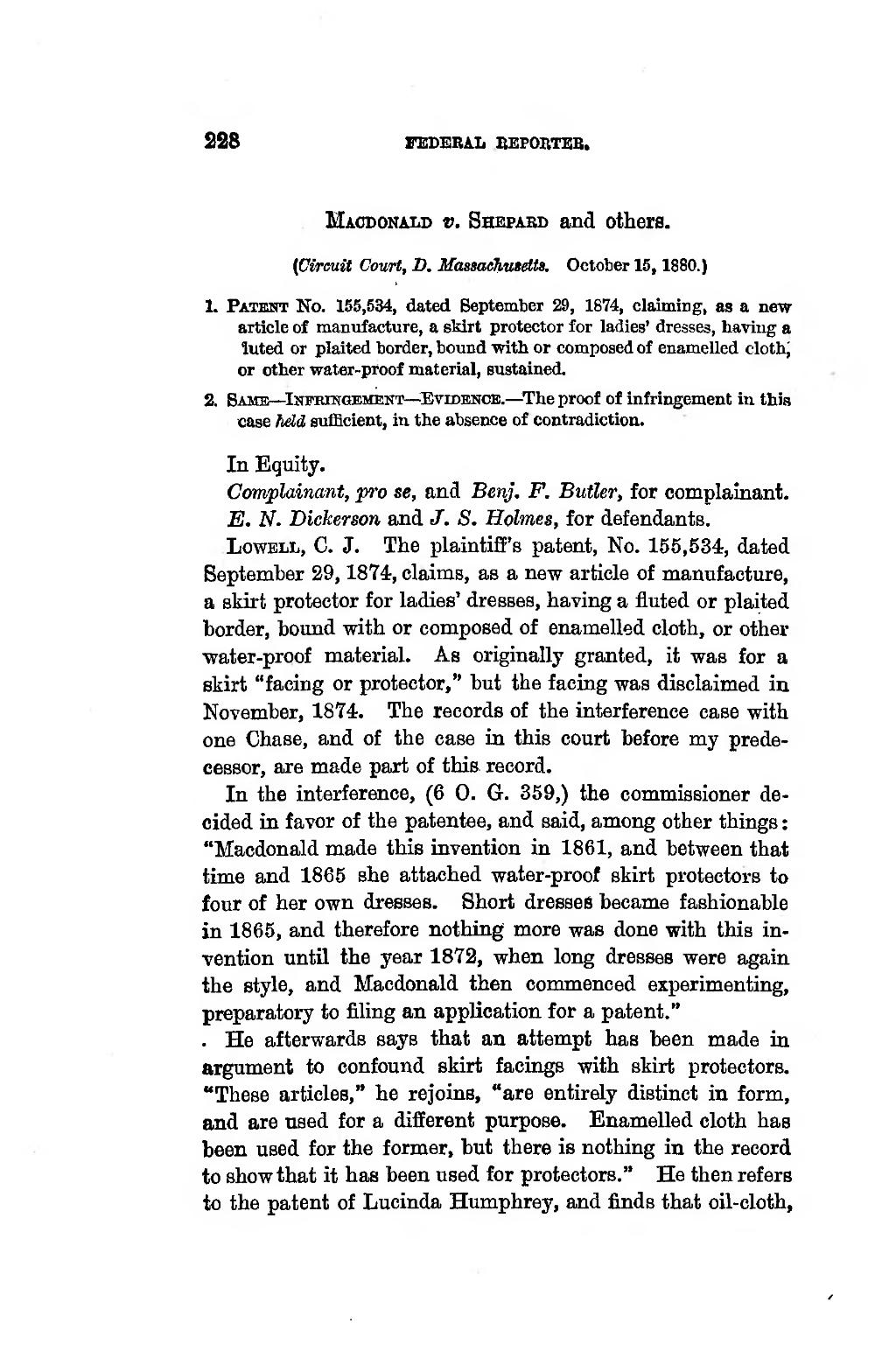228 FEDEBAJi BEFOBTEB. �MAODONTAiiD V. Shspabd and othera. (Circuit Court, D. Massachusetts. October 15, 1880.) �1. Patbist No. 155,534, dated Beptember 29, 1874, claiming, as a new �article of manufacture, a skirt protector for ladies' dresses, haviug a luted or plaited border, bound with or composed of enamelled cloth| or other water-proof material, sustained. �2. Samb — Infringement— Evidence. — The proof of infringemeat in thia �case hdd suiBcient, in the absence of contradiction. �In Equity. �Complainant, pro se, and Benj. F. Butler, for complainant. �E. N. Dickerson and J. S. Holmes, for defendants. �LowELL, C. J. The plaintiff's patent. No. 156,534, dated September 29, 1874, claims, a3 a new article of manufacture, a skirt protector for ladies' dresses, having a fluted or plaited border, bound with or composed of enamelled cloth, or other ■water-proof material. As originally granted, it was for a skirt "facing or protector," but the facing was disclaimed in November, 1874. The records of the interference case with one Chase, and of the case in this court before my prede- eessor, are made part of this record. �In the interference, (6 0. G. 359,) the commissioner de- cided in favor of the patentee, and said, among other things : "Macdonald made this invention in 1861, and between that time and 1865 she attached water-proof skirt protectors to four of her own dresses. Short dresses became fashionable in 1865, and therefore nothing more was done with this in- vention untU the year 1872, when long dresses were again the style, and Macdonald then commenced experimenting, preparatory to filing an application for a patent." . He afterwards says that an attempt has been made in argument to confound skirt facings with skirt protectors. "These articles," he rejoins, "are entirely distinct in form, and are used for a different purpose. Enamelled cloth has been used for the former, but there is nothing in the record to show that it has been used for protectors." He then refers to the patent of Lucinda Humphrey, and finds that oil-cloth, ����
Page:Federal Reporter, 1st Series, Volume 4.djvu/242
This page needs to be proofread.
